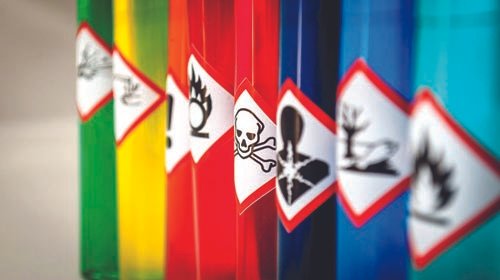Breathing problems. Itchy skin, rashes and burns. Irritated eyes. For some workers, including maintenance workers, janitors and housekeepers, these symptoms may have a common factor: cleaning products.
S.M#9 : Cleaning Chemicals

Follow Us
Chemicals in certain cleaning products also can cause asthma or trigger asthma attacks, OSHA cautions, adding that “some cleaning products contain hazardous chemicals that can enter the body through skin contact or from breathing gases into the lungs.”
What can be done to keep workers who use these products safe?
Stay informed
A number of factors should be considered before choosing a cleaning product, including ingredients, how it will be stored, whether ventilation is adequate where it’s being used, if it can come in contact with a worker’s skin, and whether mists or vapors are released.
If employees will be using hazardous cleaning chemicals, they need to be trained. Required training under OSHA’s Hazard Communication Standard (1910.1200) includes understanding:
- The health and physical hazards of cleaning chemicals
- How to properly handle, use and store the products
- What type of personal protective equipment to wear
- How to use the hazard information, including labels and Safety Data Sheets
- Procedures to follow in the event of a spill
Workers also should know to never mix different chemicals, because life-threatening gases potentially can be released. For example, OSHA warns that mixing cleaning products that contain bleach with ammonia can result in severe lung damage or death.



